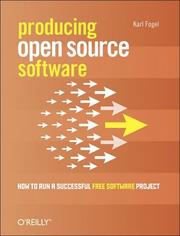| Listing 1 - 10 of 1232 | << page >> |
Sort by
|
Book
ISBN: 1479978116 1479978132 1479978124 Year: 2015 Publisher: Piscataway, New Jersey : Institute of Electrical and Electronics Engineers (IEEE),
Abstract | Keywords | Export | Availability | Bookmark
 Loading...
Loading...Choose an application
- Reference Manager
- EndNote
- RefWorks (Direct export to RefWorks)
Create scientific venue for participants can share ideas, strategies & policies for tackling development, research & adaption challenges related to open source tools & open source development environments for customized & enterprise grade applications.
Book
ISBN: 0738199036 Year: 2015 Publisher: [Place of publication not identified] : IEEE,
Abstract | Keywords | Export | Availability | Bookmark
 Loading...
Loading...Choose an application
- Reference Manager
- EndNote
- RefWorks (Direct export to RefWorks)
Abstract: Identity assertion, role gathering, multilevel access control, assurance, and auditing are provided by the Biometric Open Protocol Standard (BOPS). The BOPS implementation includes software running on a client device (smartphone or mobile device), a trusted BOPS server, and an intrusion detection system. The BOPS implementation allows pluggable components to replace existing components' functionality, accepting integration into current operating environments in a short period of time. The BOPS implementation provides continuous protection to the resources and assurance of the placement and viability of adjudication and other key features. Accountability is the mechanism that proves a service-level guarantee of security. The BOPS implementation allows the systems to meet security needs by using the application programming interface. The BOPS implementation need not know whether the underlying system is a relational database management system or a search engine. The BOPS implementation functionality offers a "point-and-cut" mechanism to add the appropriate security to the production systems as well as to the systems in development. The architecture is language neutral, allowing Representational State Transfer (REST), JavaScript Object Notation (JSON), and Secure Sockets Layer (SSL) or Transport Layer Security to provide the communication interface. The architecture is built on the servlet specification, open SSLs, Java, JSON, REST, and an open persistent store. All tools adhere to open standards, allowing maximum interoperability. Keywords: admin console, application, BOPS admin, BOPS cluster, BOPS server, BOPS IDS, client device IDS, Jena Rules, IDS cluster, IEEE 2410, liveness, original site admin, site admin, trusted adjudicated data, user, user device.
Book
ISBN: 1665464771 9781665464772 166546478X Year: 2023 Publisher: Piscataway, NJ : IEEE,
Abstract | Keywords | Export | Availability | Bookmark
 Loading...
Loading...Choose an application
- Reference Manager
- EndNote
- RefWorks (Direct export to RefWorks)
Book
ISBN: 150905586X 1509055878 Year: 2016 Publisher: Piscataway, New Jersey : IEEE,
Abstract | Keywords | Export | Availability | Bookmark
 Loading...
Loading...Choose an application
- Reference Manager
- EndNote
- RefWorks (Direct export to RefWorks)
Annotation Create scientific venue for participants can share ideas, strategies & policies for tackling development, research & adaption challenges related to open source tools & open source development environments for customized & enterprise grade applications.
Book
ISBN: 9526924401 1728127866 Year: 2019 Publisher: Piscataway, NJ : IEEE,
Abstract | Keywords | Export | Availability | Bookmark
 Loading...
Loading...Choose an application
- Reference Manager
- EndNote
- RefWorks (Direct export to RefWorks)
Book
ISBN: 1728190509 9781728190501 1728190517 Year: 2021 Publisher: IEEE
Abstract | Keywords | Export | Availability | Bookmark
 Loading...
Loading...Choose an application
- Reference Manager
- EndNote
- RefWorks (Direct export to RefWorks)
Book
ISBN: 9798350312348 9798350312355 Year: 2023 Publisher: IEEE
Abstract | Keywords | Export | Availability | Bookmark
 Loading...
Loading...Choose an application
- Reference Manager
- EndNote
- RefWorks (Direct export to RefWorks)

ISBN: 9780596007591 Year: 2006 Publisher: Sebastopol : O'Reilly,
Abstract | Keywords | Export | Availability | Bookmark
 Loading...
Loading...Choose an application
- Reference Manager
- EndNote
- RefWorks (Direct export to RefWorks)
Book
Year: 2001 Publisher: Copenhagen : Nordic Council of Ministers,
Abstract | Keywords | Export | Availability | Bookmark
 Loading...
Loading...Choose an application
- Reference Manager
- EndNote
- RefWorks (Direct export to RefWorks)
In January 2001 an ad-hoc group was established to look into open source initiatives. A situation report that shows the possibilities of the Nordic countries becoming the leaders on open source in Europe.
Book
Year: 2020 Publisher: London : University of Westminster Press,
Abstract | Keywords | Export | Availability | Bookmark
 Loading...
Loading...Choose an application
- Reference Manager
- EndNote
- RefWorks (Direct export to RefWorks)
"The concept of 'the commons' has been used as a framework to understand resources shared by a community rather than a private entity, and it has also inspired social movements working against the enclosure of public goods and resources. One such resource is free (libre) and open source software (FLOSS). FLOSS emerged as an alternative to proprietary software in the 1980s. However, both the products and production processes of FLOSS have become incorporated into capitalist production. For example, Red Hat, Inc. is a large publicly traded company whose business model relies entirely on free software, and IBM, Intel, Cisco, Samsung, Google are some of the largest contributors to Linux, the open-source operating system. This book explores the ways in which FLOSS has been incorporated into digital capitalism. Just as the commons have been used as a motivational frame for radical social movements, it has also served the interests of free-marketeers, corporate libertarians, and states to expand their reach by dragging the shared resources of social life onto digital platforms so they can be integrated into the global capitalist system."--Back cover.
| Listing 1 - 10 of 1232 | << page >> |
Sort by
|

 Search
Search Feedback
Feedback About UniCat
About UniCat  Help
Help News
News